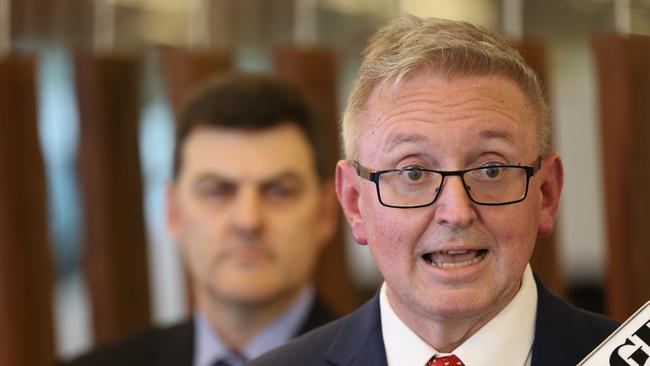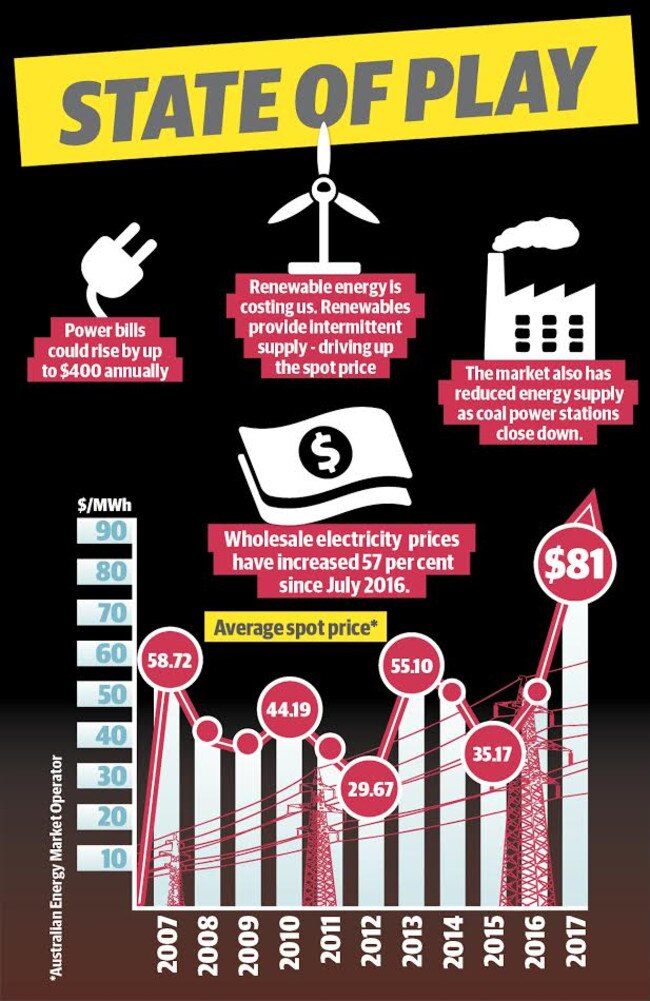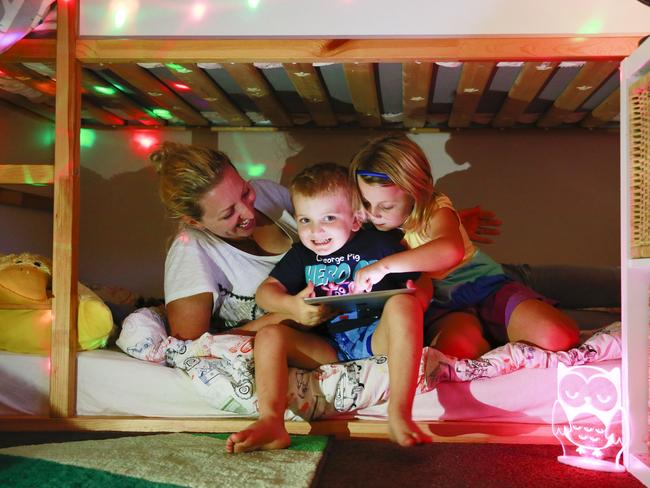Households will pay up to $400 more for power because of the rising cost of wholesale electricity
EXCLUSIVE: Households will have to pay up to $400 a year more for power from July because of a 50 per cent increase in the wholesale electricity price.

NSW
Don't miss out on the headlines from NSW. Followed categories will be added to My News.
- Electricity shock: Business bills have doubled in the past decade
- Power price hikes force job cuts at Gladstone’s Boyne Smelters Ltd
HOUSEHOLDS will have to pay up to $400 a year more for power from July because of a 50 per cent increase in the wholesale electricity price.
And there are fears NSW could become the next South Australia, with the cost of doing business to become so high that manufacturers will flee the state. The shock price hike of between 10-20 per cent comes on the back of closures to Victoria’s Hazlewood coal power plant and South Australia’s Northern power station.
The rising wholesale electricity price, which makes up 45 per cent of a household’s bill, has also increased because of soaring investment in renewable energy instead of coal.

Energy Minister Don Harwin yesterday confirmed to The Daily Telegraph that increases were on the way after a period of stability for several years. After disastrous Labor policies on gold plating and the botched solar bonus scheme, NSW electricity prices rose more than 100 per cent over seven years from 2007.
In 2014, the average household electricity bill in NSW hit $2073 — and prices have remained fairly stable since.
“The dilemma for householders and businesses ... is the unwillingness of business to invest in new generating capacity due to the uncertain climate,” Mr Harwin said. “We need to come together in Australia’s interests to keep downward pressure on prices.”
Mr Harwin has been inundated since taking on the job with prospective coal power investors concerned about federal Labor leader Bill Shorten coming into power and introducing an ambitious renewable energy target.
Wholesale electricity prices have increased in NSW by 57 per cent since July 2016, with the price for the year 2015-16 at $51.70 per megawatt hour and the price for the year to date having risen to an average of $81.17.

Industry experts say one reason for the rise has been the state’s increased reliance on renewable energy.
Wind and solar power are sold more cheaply to the national electricity market than coal and gas due to federal subsidies. But renewables provide intermittent supply and when the wind stops or sun doesn’t shine, coal and gas power stations have to ramp up supply, driving up the spot price. “NSW is headed down the same path as South Australia,” the Australian Power Project’s Nathan Vass said.
“Manufacturing is fleeing South Australia because the cost of doing business is just too high and before too long NSW will be in the exact same situation.”
Industry experts said the way to stop wholesale prices from more increases included increasing the domestic gas supply, building more coal- or gas-powered stations or extending the lives of existing ones and ending subsidies for renewable energy.
Guarantees around the government sale of the “poles and wires” businesses mean network costs can only rise at the same level as CPI.



